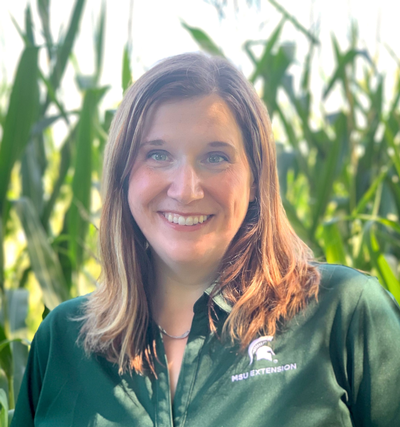North Central SARE's network of state coordinators–housed at each land grant university throughout the region–conduct train-the-trainer programs and share information about our grant programs and other sustainable agriculture resources in their respective states.
State Contacts

Emily Proctor
Extension Tribal Educator
Bio
Emily Proctor, MSW, BASW, earned her degrees from Michigan State University – School of Social Work. She is a citizen of the Little Traverse Bay Bands of Odawa Indians, Harbor Springs, Michigan. She serves as a Tribal Extension Educator for MSU and conducts train-the-trainer programs and shares information about SARE's grant programs and other sustainable agriculture resources at five Tribal colleges and other Tribal communities in Michigan and Wisconsin.

Sarah Zeiler
Extension Environmental Management Educator
Michigan State University
Bio
Sarah Zeiler is an Environmental Management Educator based in Hillsdale County, Michigan, where she works with farmers on issues related to ecology and land stewardship.
SARE IN MICHIGAN
Since 1988, SARE has awarded numerous grants in every state and Island Protectorate. Aimed at advancing sustainable innovations, these grants add up to an impressive portfolio of sustainable agriculture efforts across the nation.

MICHIGAN Impacts
$11.6
million
million
in funding since 1988*
342 projects
funded since 1988*
* These totals reflect available data; complete information may not be available for all grant programs prior to 2016.
Recent Stories from MICHIGAN
 Apples
Apples
Netting for Better Apples: A Sustainable Alternative to Thinning and Pest Control
In Michigan, researchers and apple growers have been testing the use of exclusion netting as a non-chemical thinning method.


